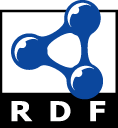Exploring Sublimation as a Tool for Polymorphic Screening in Niflumic Acid−Caffeine Pharmaceutical Cocrystals
Metadatos
Mostrar el registro completo del ítemAutor
Acebedo-Martínez, Francisco J.; Alarcón Payer, Carolina; Domínguez Martín, Alicia; Frontera, Antonio; Prohens, Rafel; Barbas, Rafael; Choquesillo Lazarte, DuaneEditorial
American Chemical Society
Fecha
2025-10-07Referencia bibliográfica
Acebedo-Martínez, F. J., Alarcón-Payer, C., Domínguez-Martín, A., Frontera, A., Prohens, R., Barbas, R., & Choquesillo-Lazarte, D. (2025). Exploring sublimation as a tool for polymorphic screening in niflumic acid–caffeine pharmaceutical cocrystals. Crystal Growth & Design, acs.cgd.5c01007. https://doi.org/10.1021/acs.cgd.5c01007
Patrocinador
MCIU/AEI/10.13039/501100011033 and ERDF – (Grants PID2023-151538NB-I00, PID2023-146632OB-I00, PID2023-148453NB-I00)Resumen
Sublimation has emerged as a powerful tool for
polymorphic screening in pharmaceutical multicomponent materials. In this work, a combined strategy involving mechanochemistry
and sublimation enables the selective synthesis and isolation of a
novel polymorph (Form III) of the niflumic acid−caffeine (NIF−
CAF) cocrystal. Solid-state characterization and complementary
theoretical studies revealed that Form III is morphotropically
related to Form II, sharing a similar molecular conformation with
the −COOH and −CF3 groups positioned on the same side of the
NIF molecule. However, Form III exhibits a distinct packing
arrangement, featuring embedded −CF3 groups and alternating
molecular tapes stabilized by π−π and F···F interactions. Thermal
analysis also indicates an enantiotropic relationship between Forms
II and III, with Form III becoming the more stable phase above the estimated transition temperature of ∼102 °C, and showing a
melting point of 156 °C. These findings demonstrate the relevance of sublimation in polymorphic screening and its potential to
expand the solid-state landscape of multicomponent materials with enhanced control and reproducibility
![pdf [PDF]](/themes/Mirage2/images/thumbnails/mimes/pdf.png)






